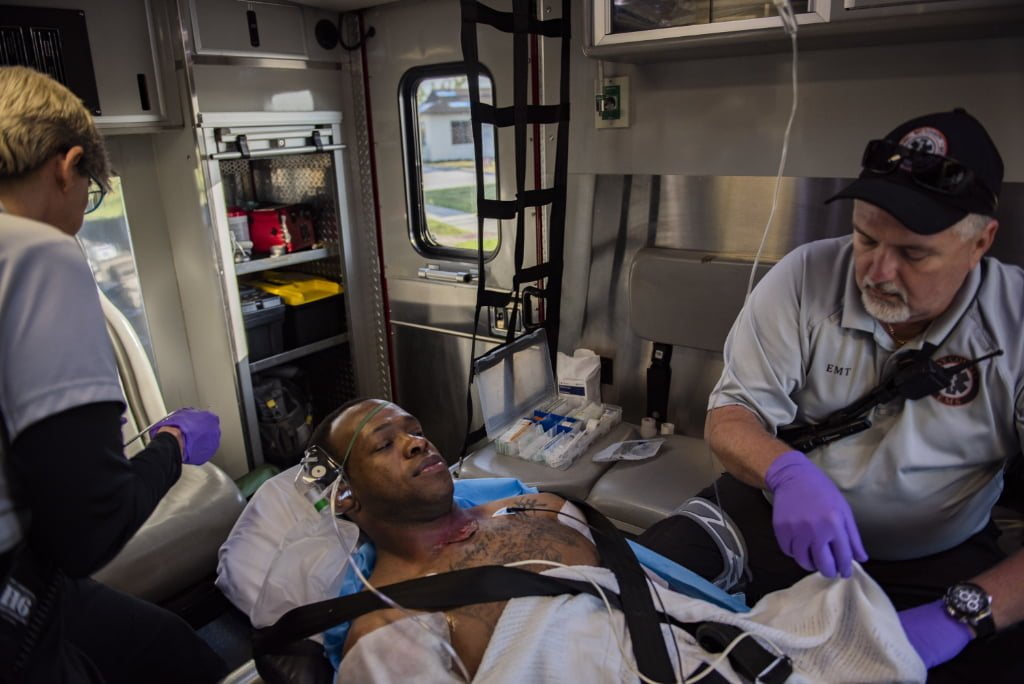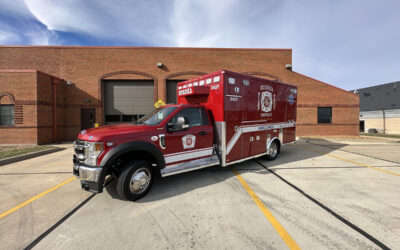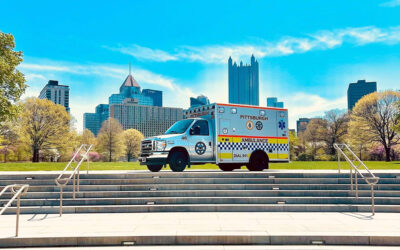
U.S. Air Force photo by Staff Sgt. Magen M. Reeves
By Jason D. Haag, CCEMT-P, CIC, CAC, CADS
“Ambulance 793 to dispatch. Arriving Samaritan Medical. 17.3 miles.”
“Copy that 793. You’re at Samaritan with 17.3.”
This is common radio traffic when arriving at your receiving facility on either a 911 job or an inter-facility transport. While this radio transmission is taking place between your partner and the dispatcher, there is so much more taking place. You are busy preparing your patient for and informing them of the next steps. Oxygen is being moved from the onboard supply to a portable tank. The cardiac monitor is being secured to the stretcher. You’re covering your patient. You’re ensuring all cables and anything else that may get hung-up while removing the stretcher are clear.
Previous: 89-Year Old CA Veteran Signs Ballot While Strapped to Gurney
But there’s one thing left to do that we either forget, or intend to get once inside the hospital, which we may not always be able to do either. That one thing is obtaining a signature. This signature on the “billing form,” or “HIPAA form,” is applicable to so much more than just billing or patient privacy. The actual name of the form is the Assignment of Benefits (AOB) form. Not only does a signature on this form give EMS the permission to submit a claim to the payor(s) (insurance) on the patient’s behalf, it also gives us permission to report their PHI to the receiving hospital for a seamless continuum of care.
So, we get the signature. We can bill. That’s it, right? On the surface, yes; but this allows for so much more. It gives EMS the appeal a denied claim (payment) on behalf of the patient. It also is evidence of the patient accepting financial responsibility for the EMS encounter (only if the patient is the signer), and it also is a way for us to document that the patient received a copy of the agency’s Notice of Privacy Practices, or NPP. Medicare, recently, also added another reason a signature is used for verification. It serves as a verification that EMS services were in fact provided as claimed by the EMS provider.
We have identified many uses for this signature that we obtain, often while still in the rig, but it is also law. The Medicare regulation for obtaining this signature is found in 42 CFR 424.36. This states that any agency that bills for services and participates in the Medicare program must obtain a signature. This signature may be on paper or on an electronic device however, it must be attached to your patient care report.
Previous: Ezras Nashim (NY) Receives Ambulance after Lengthy Battle
The general rule of the Medicare Signature Rule is that, unless the patient is dead, the patient must sign the signature form. This applies to Section 1 of the form where the patient is required to sign. If the patient only creates an “X” or other mark that is not legible, a witness must sign attesting that it is in-fact the mark of the patient.
Section 2 is to be completed if the patient is mentally or physically incapable of signing. Whatever the reason is for the patient not being able to sign, it must be documented. There are specific parties who may sign Section 2 of this form. They are:
- The patient’s legal guardian.
- A relative or person who receives Social Security or other governmental benefits on behalf of the patient.
- A relative or other person who arranges for the patient’s treatment or exercises other responsibility for the patient’s affairs.
- A representative of an agency or institution that did not furnish the services for which payment is claimed (i.e., ambulance services) but furnished other care, services, or assistance to the patient.
A legible printed name of the person signing must accompany the signature.
Section 3 of the form is the last resort and the least desirable to have completed. This may only be completed under what is referred to as the “ambulance exception.” This is if the patient is unable to sign, and there is no one else present who can, then Section 3 may be completed. This section is signed by the ambulance crew member who cared for the patient and a representative of the receiving hospital. Both a signature and a printed name and title for each person signing must be documented. Also, the location of the receiving facility and the time arrived is required for Section 3 as well.
Rarely, there are times where a representative may be unavailable to sign Section 3. There are other options for verifying the patient was brought to the receiving facility. Items which may be used in place of a signature are:
- PCR signed by a hospital representative
- Copy of hospital face sheet/demographic sheet
- Patient medical record
- A hospital log or similar document
There are still a few more rules for the AOB form. There is also the Lifetime Signature Rule. As stated in 42 CFR § 424.40 (d): “A separate request for payments statement retained in the supplier’s file may be effective indefinitely.” That means, if a patient signs the form once, and your agency keeps the form on file, then there is no concrete need for a signature from the patient again. However, your AOB form must have language similar to “now or in the future.” This rule only applies to Section 1 and 2 of the AOB form, and never to Section 3.
If you are able to have the patient sign, get it done in the rig while your preparing your patient for removal from the ambulance. If you have to get the form signed in the hospital, remember to take it in with you. It’s a good practice when unloading to make sure you have your AOB form along with all other notes and patient information you will be providing to the hospital. And while you’re getting report, if needed and applicable, get that signature.
Jason D. Haag, CCEMT-P, CIC, CAC, CADS, is the quality assurance analyst and clinical educator for MultiMed Billing in Baldwinsville, NY. He is also an active paramedic with Wayne County Advanced Life Support, a firefighter for The City of Geneva Fire Department, and serves on many EMS boards and community organizations. Jason is also a speaker at many EMS conferences across the country.




